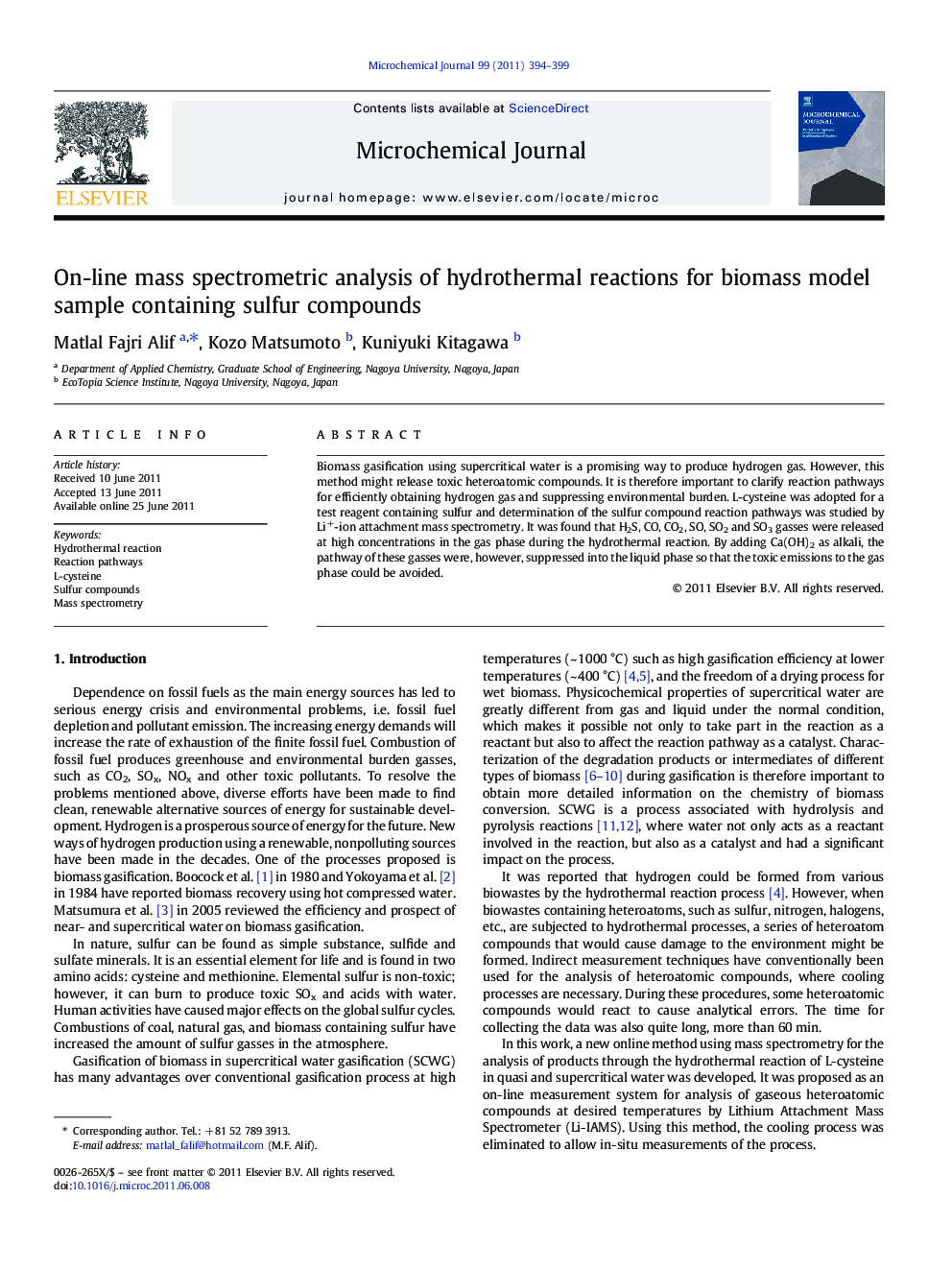| Article ID | Journal | Published Year | Pages | File Type |
|---|---|---|---|---|
| 10556862 | Microchemical Journal | 2011 | 6 Pages |
Abstract
Biomass gasification using supercritical water is a promising way to produce hydrogen gas. However, this method might release toxic heteroatomic compounds. It is therefore important to clarify reaction pathways for efficiently obtaining hydrogen gas and suppressing environmental burden. L-cysteine was adopted for a test reagent containing sulfur and determination of the sulfur compound reaction pathways was studied by Li+-ion attachment mass spectrometry. It was found that H2S, CO, CO2, SO, SO2 and SO3 gasses were released at high concentrations in the gas phase during the hydrothermal reaction. By adding Ca(OH)2 as alkali, the pathway of these gasses were, however, suppressed into the liquid phase so that the toxic emissions to the gas phase could be avoided.
Related Topics
Physical Sciences and Engineering
Chemistry
Analytical Chemistry
Authors
Matlal Fajri Alif, Kozo Matsumoto, Kuniyuki Kitagawa,
